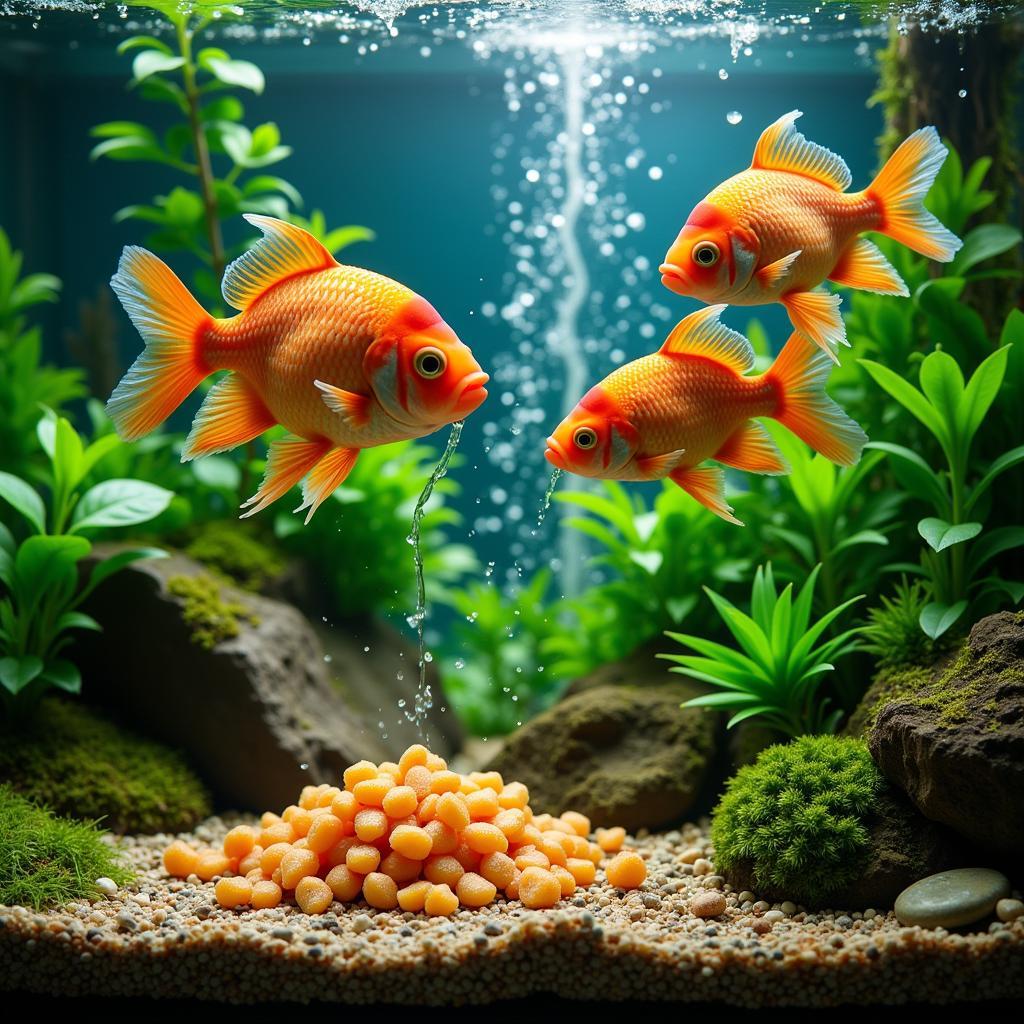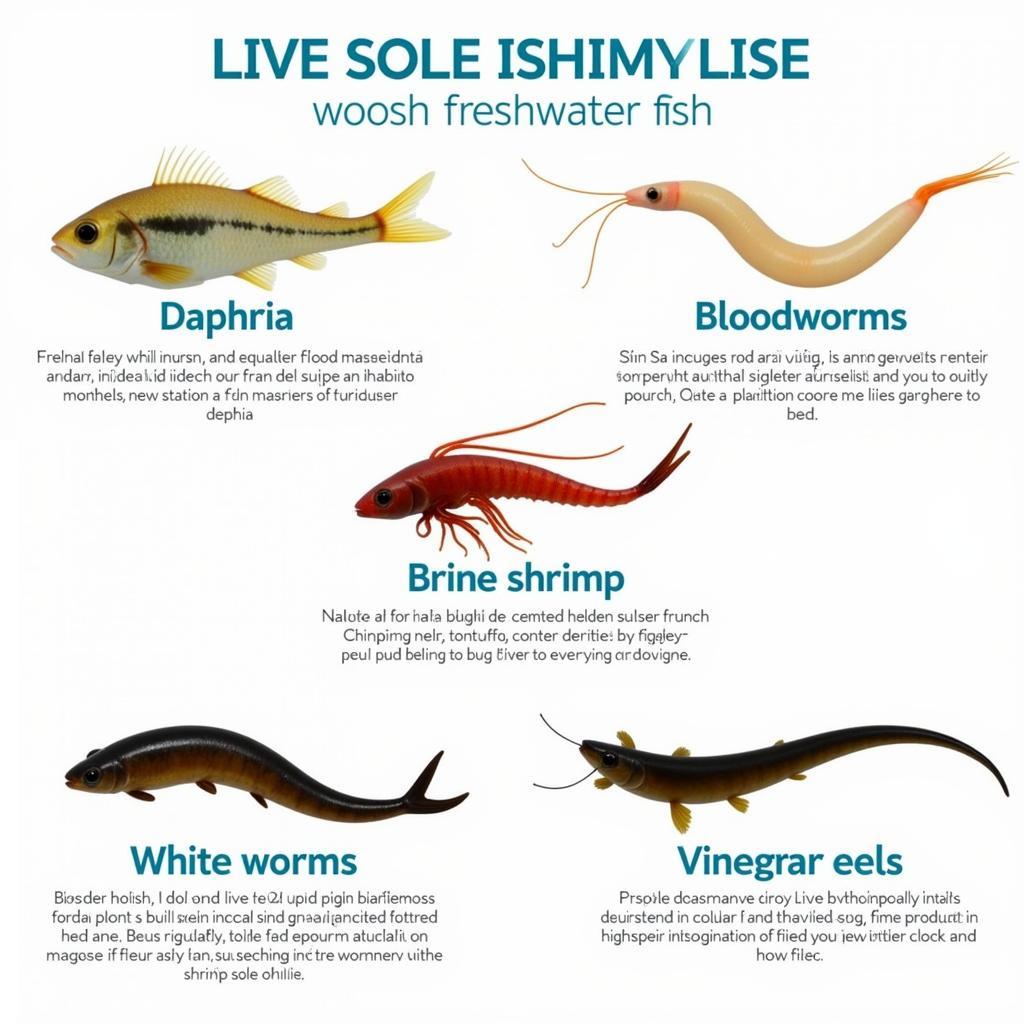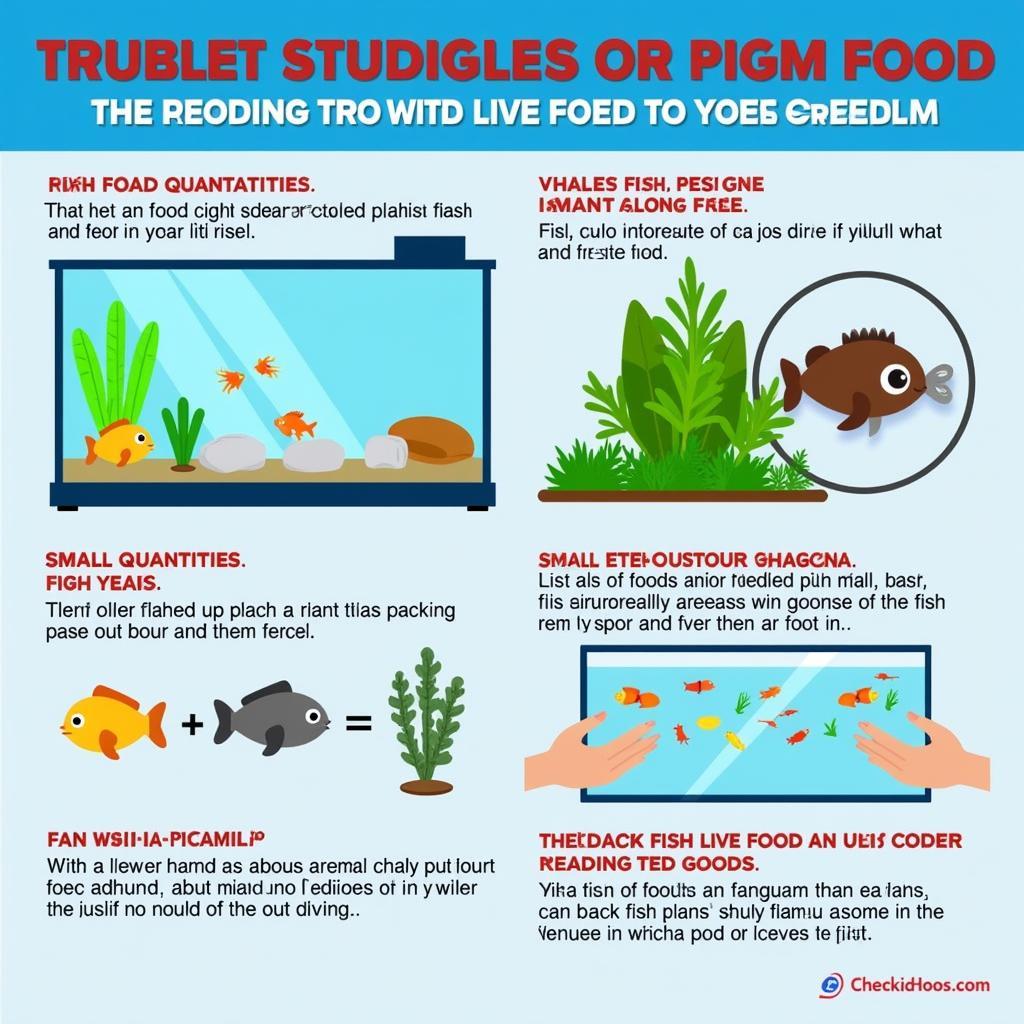Live food offers freshwater fish a nutritional powerhouse, mimicking their natural diet and promoting vibrant health. From boosting their immune system to enhancing their natural colors, live food can dramatically improve the well-being of your aquatic companions. This guide explores the benefits, types, and best practices for incorporating live food into your freshwater aquarium.
The Benefits of Live Food for Freshwater Fish
Feeding your fish live food provides a range of advantages compared to processed flakes or pellets. These tiny creatures are packed with essential nutrients, proteins, and fats that are often lost during the manufacturing of commercial fish food. This nutritional richness translates to healthier, more active fish with improved breeding potential. Plus, the act of hunting live food stimulates their natural instincts, reducing boredom and promoting a more enriching environment.
After the initial introduction, you might notice your fish displaying increased activity and brighter colors. This is a positive sign that the live food is benefiting their overall health and well-being. Remember to maintain a balanced diet for your fish. While live food offers incredible benefits, it shouldn’t be the sole source of nutrition. A varied diet is key to ensuring your fish receive all the necessary vitamins and minerals.
 Benefits of Live Food for Freshwater Fish
Benefits of Live Food for Freshwater Fish
Types of Live Food for Freshwater Fish
There’s a diverse selection of live foods suitable for freshwater fish, each with its own nutritional profile and benefits. Some popular options include:
- Daphnia: These small crustaceans are a staple live food, rich in protein and easy to culture.
- Bloodworms: Offering a high iron content, bloodworms are excellent for enhancing color and boosting the immune system. However, they should be fed sparingly due to their richness.
- Brine Shrimp: These tiny crustaceans are ideal for smaller fish and fry, providing essential nutrients for growth and development.
- White Worms: A great source of protein and fat, white worms are readily accepted by most freshwater fish.
- Vinegar Eels: These tiny nematodes are particularly suitable for fry and smaller fish, offering a readily digestible food source.
Choosing the right live food for your fish depends on their species, size, and specific dietary needs. Consider visiting a local pet store and checking out the frozen fish food section to see what’s available. Fish food for bass and bluegill, for instance, might include different live options than food for smaller, more delicate species.
 Different Types of Live Food for Aquarium Fish
Different Types of Live Food for Aquarium Fish
Culturing Live Food at Home
For a consistent and cost-effective supply of live food, consider culturing it at home. Setting up a simple culture system for daphnia or brine shrimp is relatively straightforward and provides a fresh, readily available food source for your fish. Many online resources offer detailed instructions on how to culture different types of live food. If you are also interested in frozen fish food, you can check it at fish food frozen.
“Culturing your own live food offers a level of control over quality and nutritional content that you simply can’t achieve with commercially purchased options,” says renowned aquarist Dr. Emily Carter. “It’s a rewarding experience that benefits both you and your fish.”
Introducing Live Food to Your Aquarium
When introducing live food, start with small amounts to avoid overwhelming your fish or polluting the tank. Observe your fish’s feeding behavior and adjust the quantity accordingly. Uneaten live food can decompose and negatively impact water quality, so it’s crucial to feed responsibly. If you’re unsure about the ideal amount, consult with a local aquarium specialist or research your specific fish species. You might even find specific advice on fish food for bluegill or fish food for bass.
 Introducing Live Food to an Aquarium
Introducing Live Food to an Aquarium
Conclusion
Live Food For Freshwater Fish offers a wealth of benefits, contributing to their overall health, vibrancy, and well-being. By understanding the different types of live food available and implementing proper feeding practices, you can create a thriving and enriching environment for your aquatic companions. Consider exploring the world of live food and discover the positive impact it can have on your freshwater aquarium.
FAQs
- How often should I feed live food to my fish? Treat live food as a supplement, offering it 2-3 times a week alongside their regular diet.
- Can live food make my fish sick? Only if the live food is contaminated or not properly cultured. Ensure you source live food from a reputable supplier or culture it yourself in a clean environment.
- What if my fish don’t eat the live food? Some fish might take time to adjust to live food. Try different types to find one they prefer.
- Is live food suitable for all freshwater fish? While most freshwater fish benefit from live food, some species have specific dietary requirements. Research your fish’s needs before introducing live food.
- Can I overfeed my fish with live food? Yes, overfeeding can lead to water quality issues. Start with small amounts and observe your fish’s feeding behavior.
- Where can I buy live food for my fish? Most pet stores and online retailers specializing in aquarium supplies sell live food.
Need further assistance? Contact us at Phone Number: 02437655121, Email: minacones@gmail.com or visit us at 3PGH+8R9, ĐT70A, thôn Trung, Bắc Từ Liêm, Hà Nội, Việt Nam. We have a 24/7 customer service team.